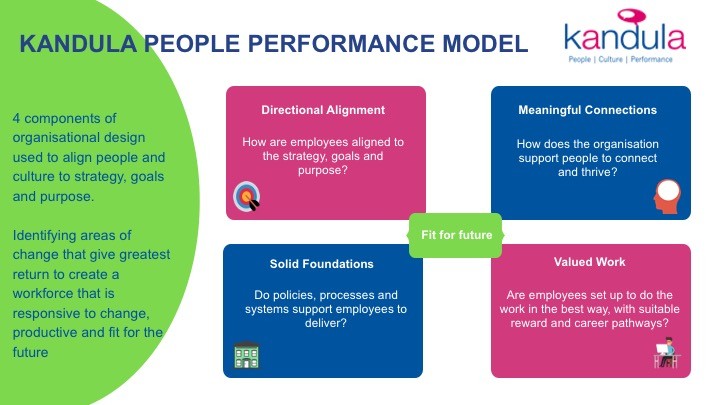Over the years I’ve held various job titles and consulted to different organisations where I’ve been introduced as the person who is here to help with Organisation Design. This isn’t a bad introduction in theory, so how come the reactions tend to be fear, distrust and a sense of doom?
In some situations I have been welcomed and there is a sense of excitement. They see that my role is to make the workplace a better environment for both employees and leaders.
I’ve realised that the difference in response tends to arise due to the context for me being there. It seems to depend on whether my brief is to facilitate a restructure or to take a more comprehensive look at the way the organisation is designed. When I’m viewed as a Grim Reaper it’s because people equate Organisation Design to restructuring and job losses. A time for stress and unwanted change.
For me it’s so much more than this.
My view of Organisation Design encompasses a number of elements and I have to thank Galbraith for this. Many years ago I was introduced to his 5 star model which defines Organisation Design as the links between Strategy, Structure, Process and Lateral Capability, Reward and HR Policies. Seeing how these elements come together to design an organisation, set me on my journey of being passionate about Organisation Design and the difference it can make to organisations. Even now I’m excited seeing organisations as complex organisms, each with their own uniqueness.
In recent years I have shaped my understanding of Organisation Design in to a model that encompasses new components that have become more prevalent in the last 20 years. For instance, the relevance of the full employee experience, the attitude to health and wellbeing or diversity and inclusion. Each of these are now at the forefront of the people agenda for organisations preparing for a very different future.
I split a review of an organisation into 4 components:
- Directional Alignment – how are employees aligned to the strategy, goals and purpose?
- Solid Foundations – do policies, processes and systems support employees to deliver?
- Valued Work – are employees set up to do the work in the best way, with suitable reward and career pathways?
- Meaningful Connections – how does the organisation support people to connect and thrive?
I’ve integrated these components into the Kandula People Performance Model.

By looking at these 4 components it’s possible to design an organisation that responds to its strategic direction and the changing environment. The good news is that in many instances it won’t mean restructuring at all as other changes will bring a greater return and less turmoil.
In my work I hope to support organisations join the dots for all touchpoints that impact employees. Remember, a restructure is just one solution to a complex situation. There are many positive changes that can be made to design organisations fit for the future.
And with this, I hope the days of the Grim Reaper will be limited.


